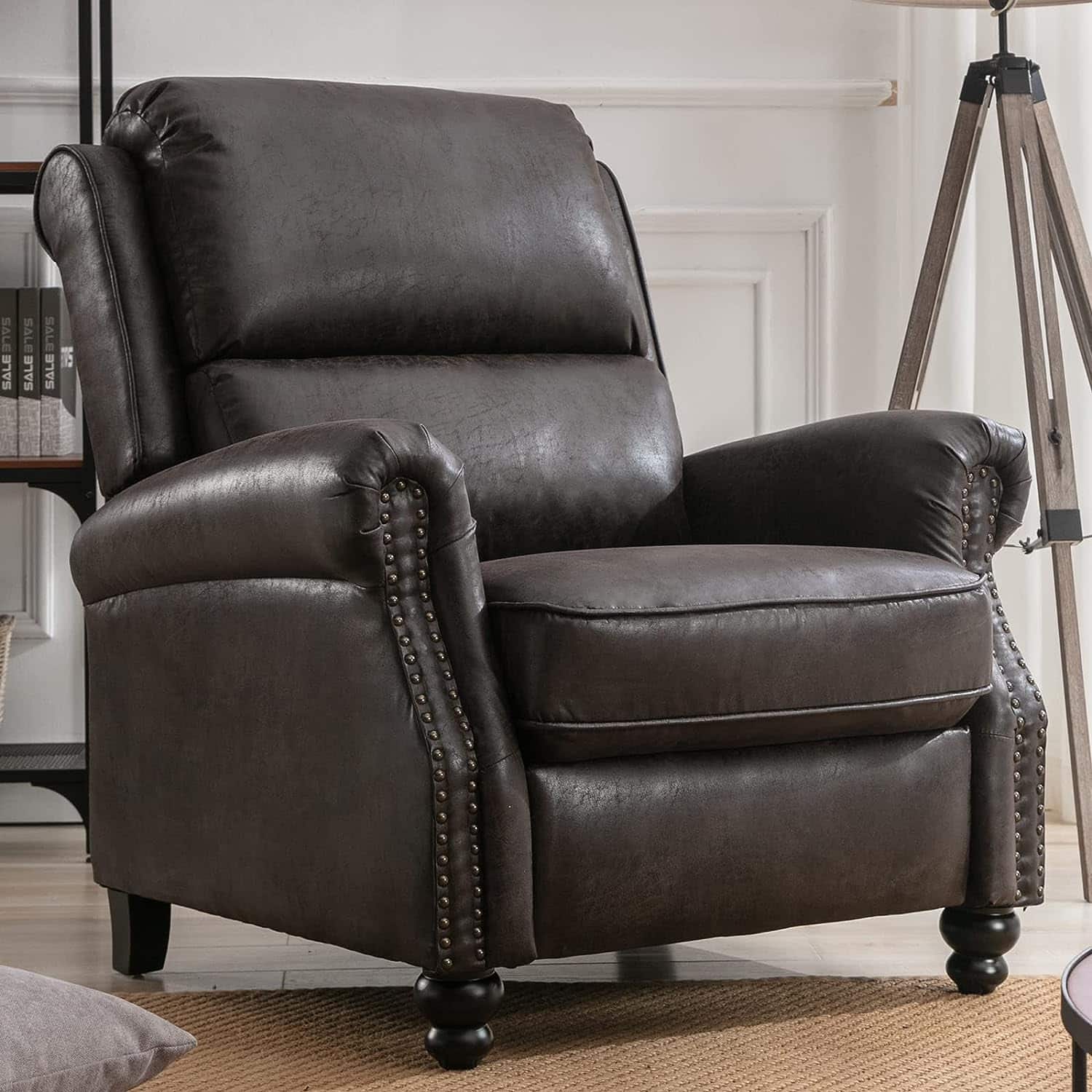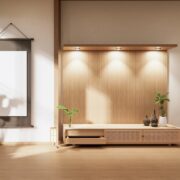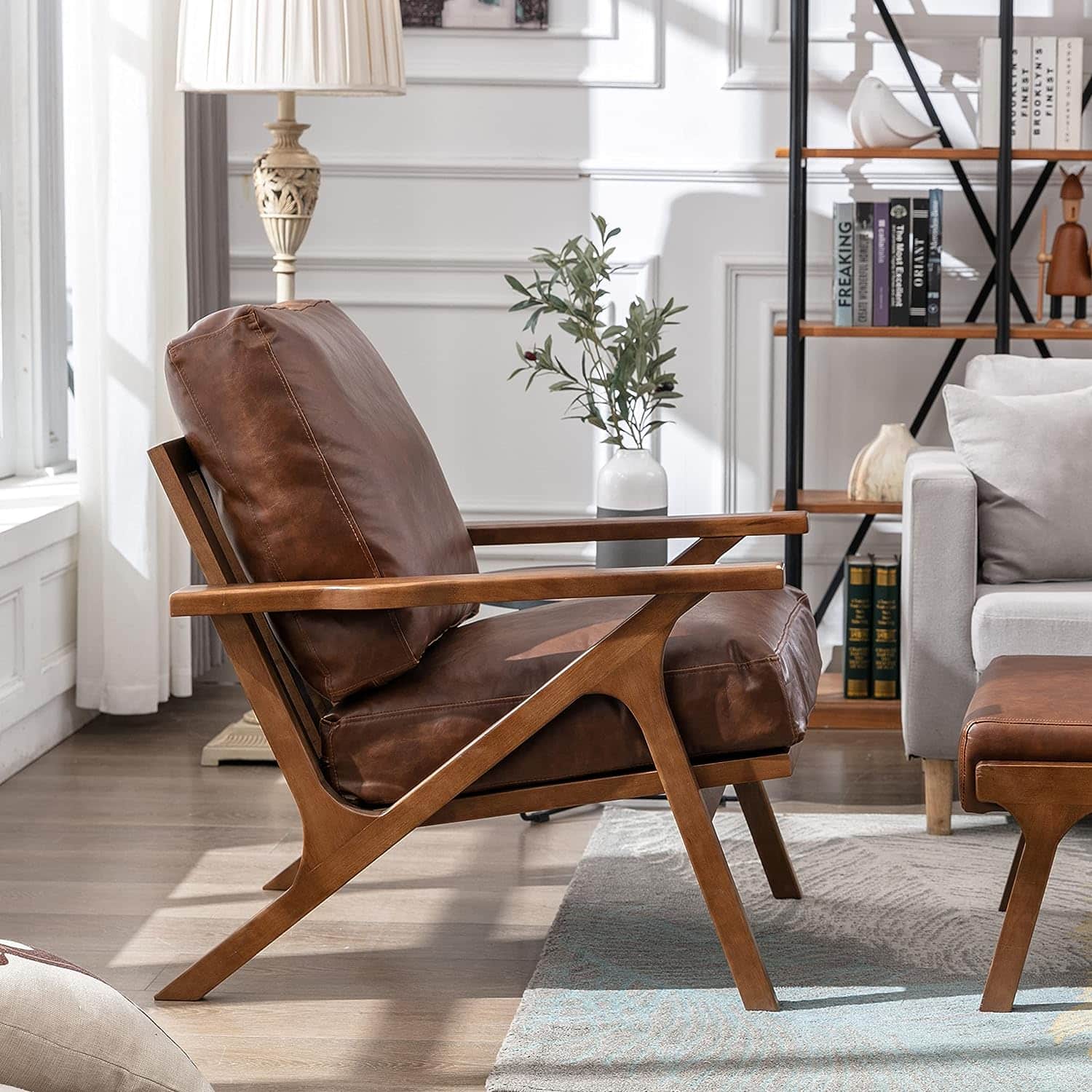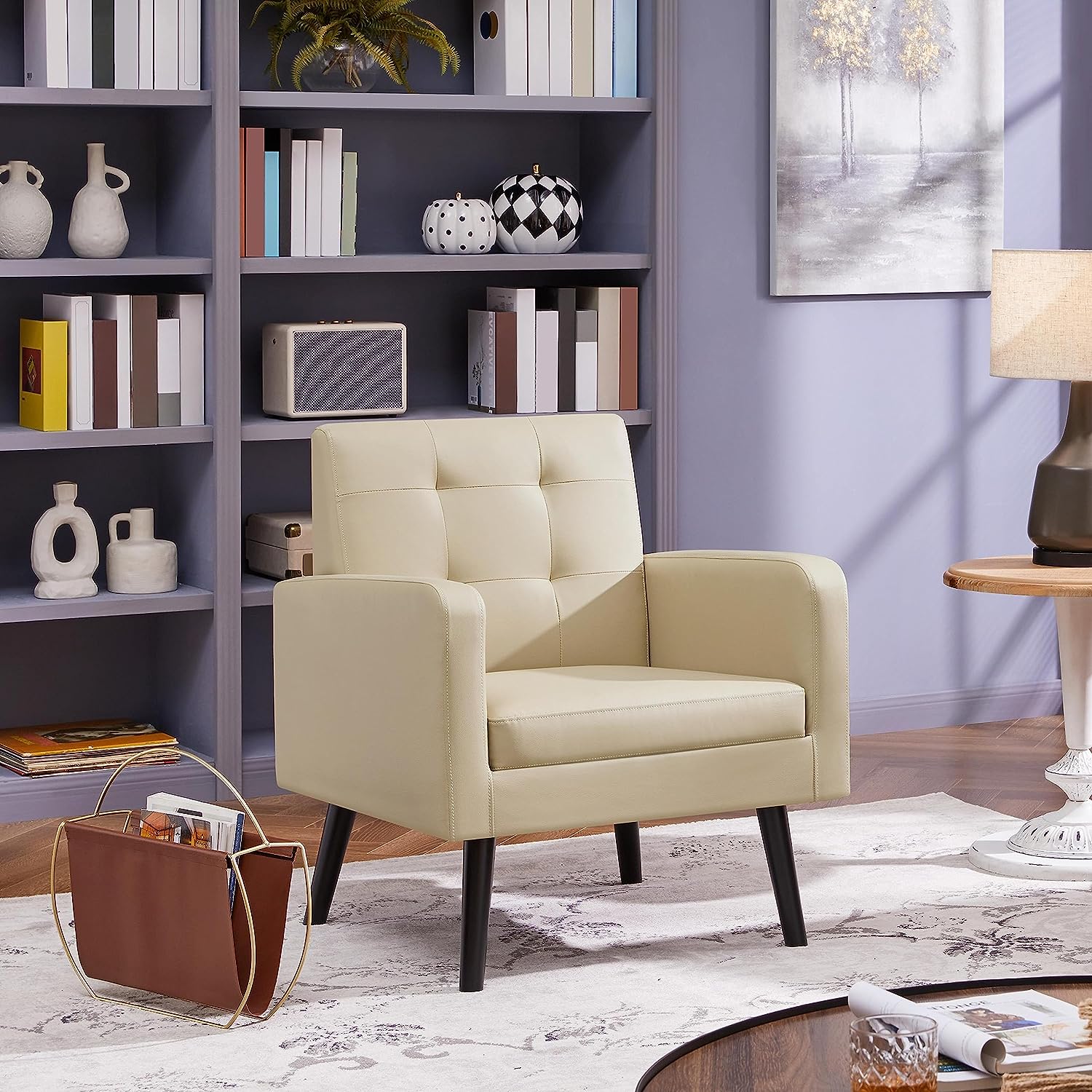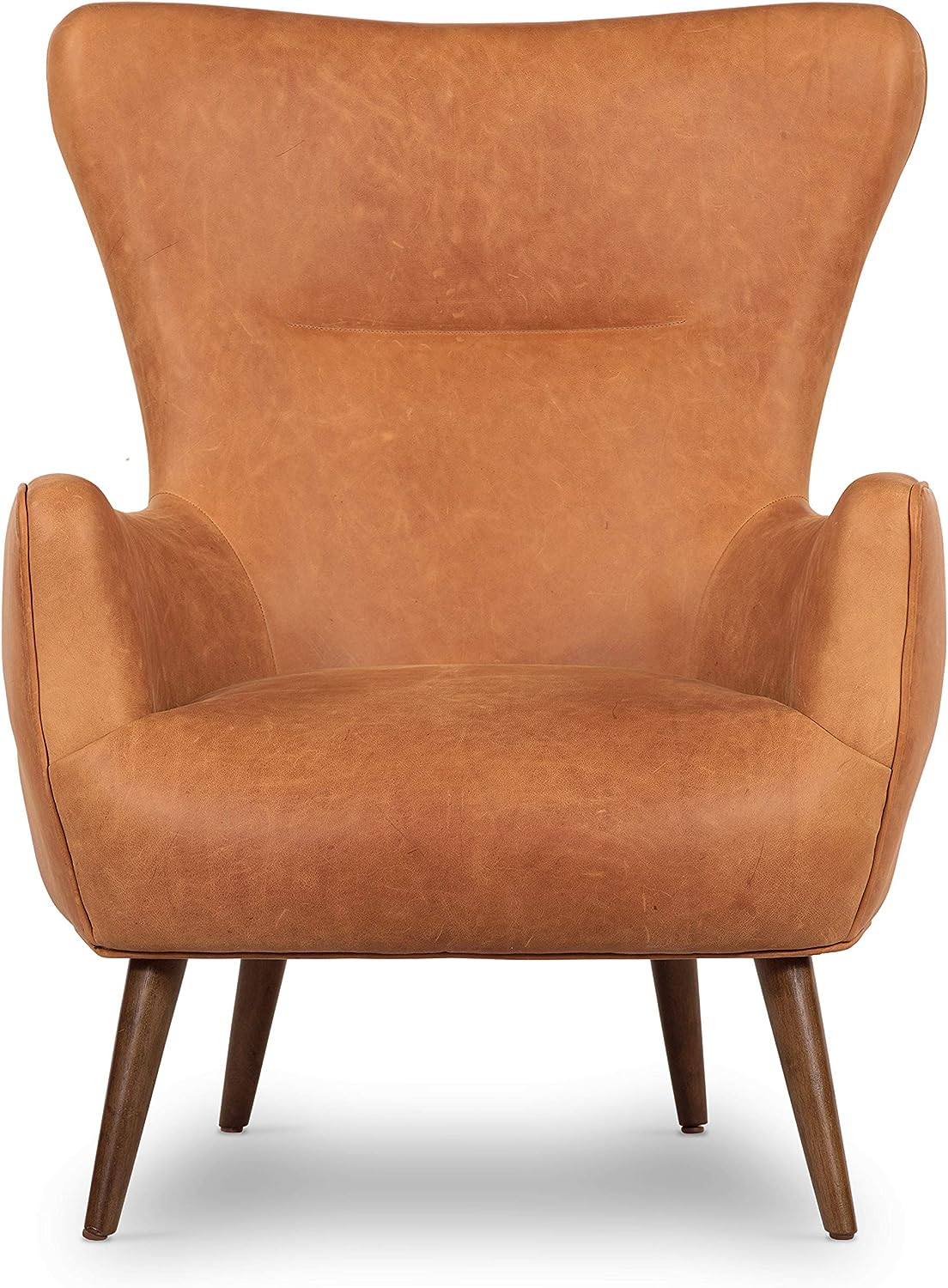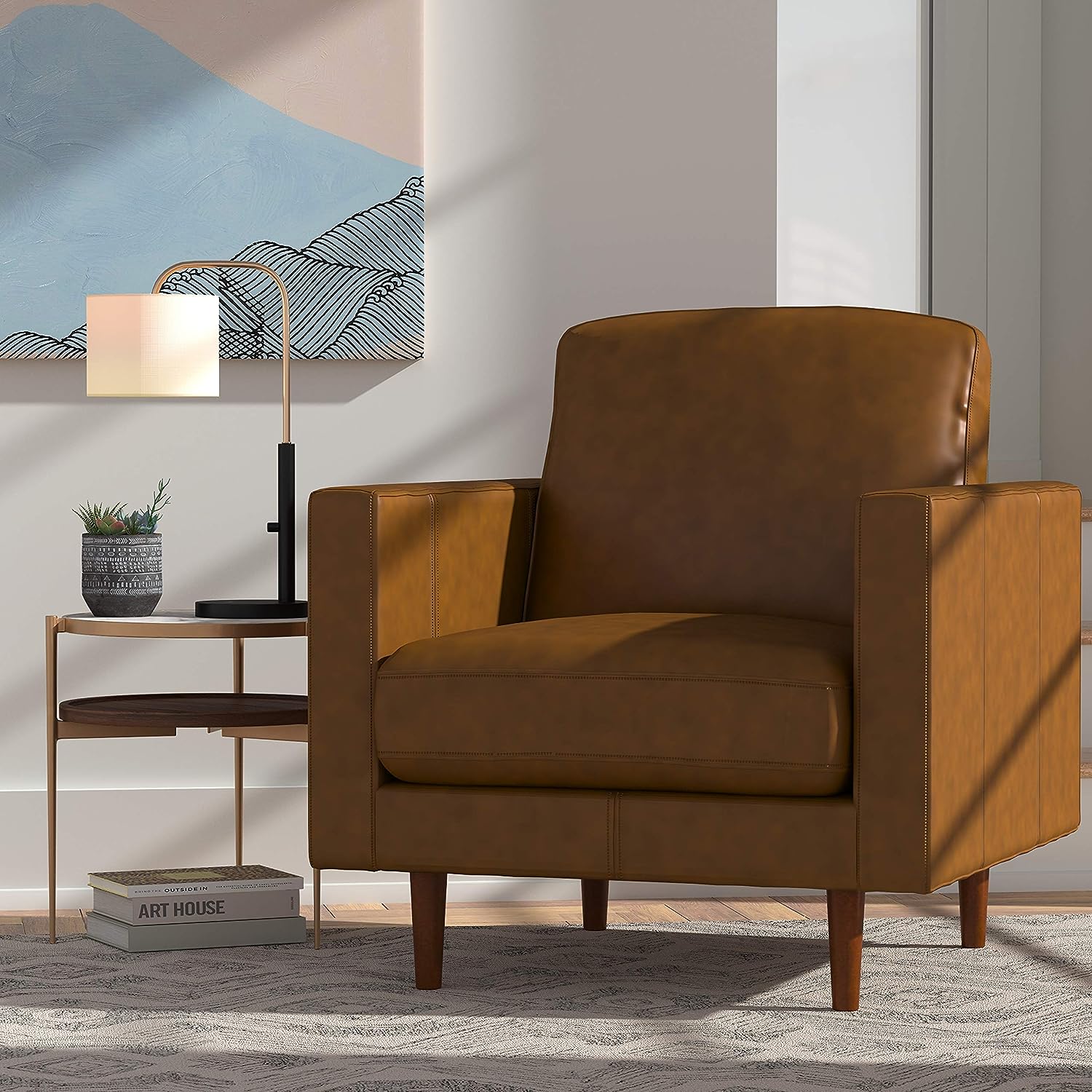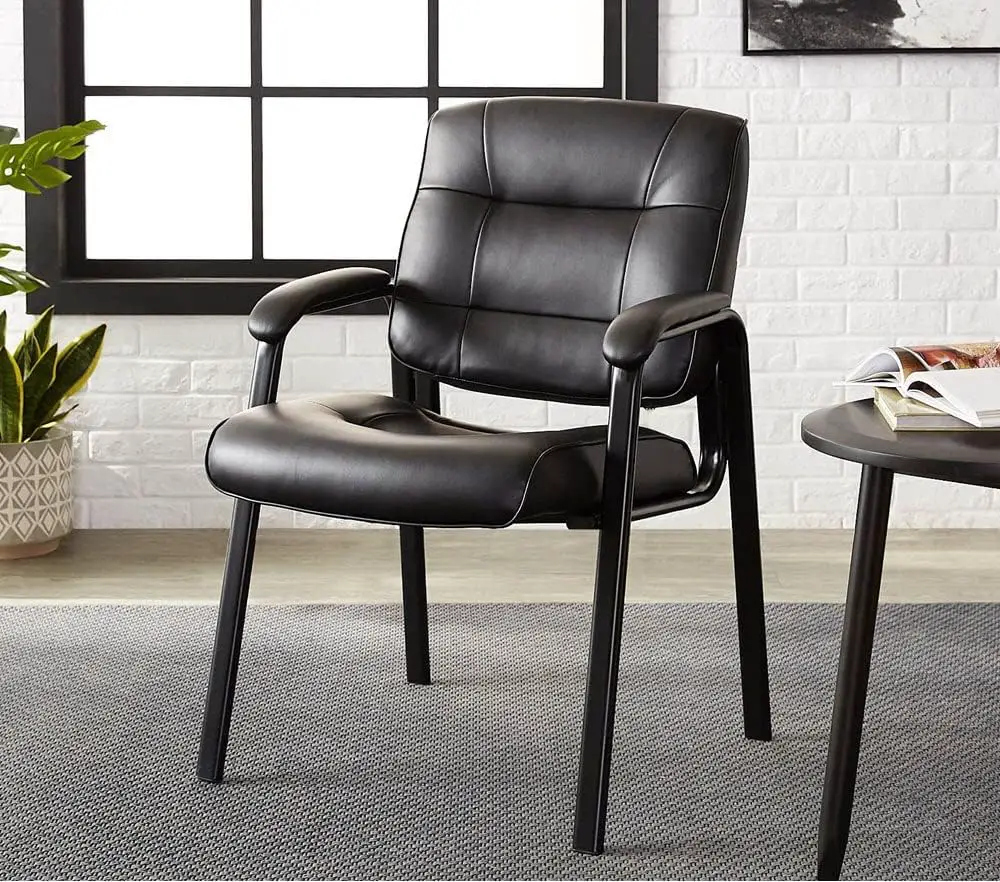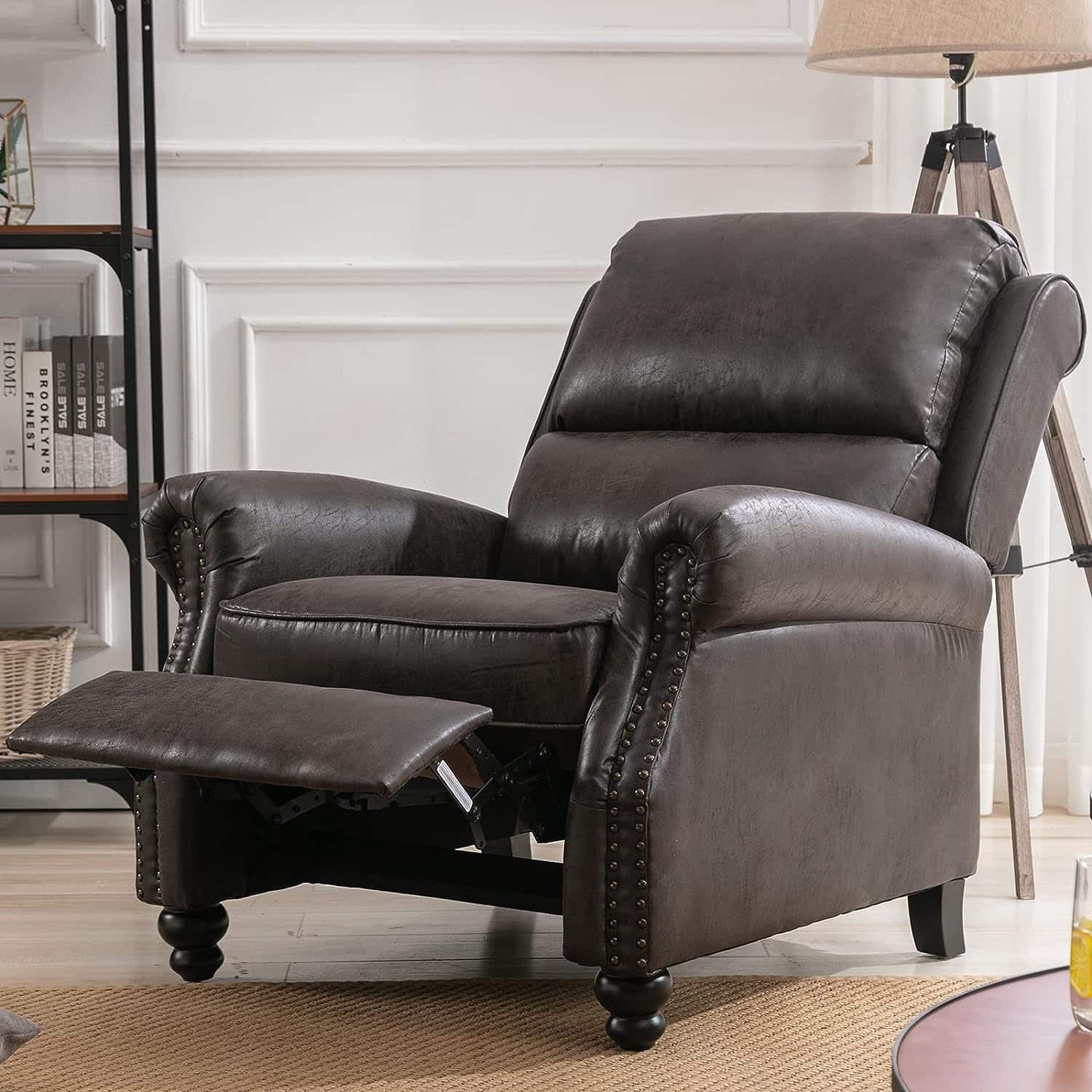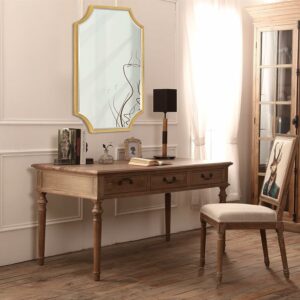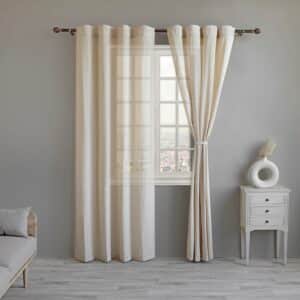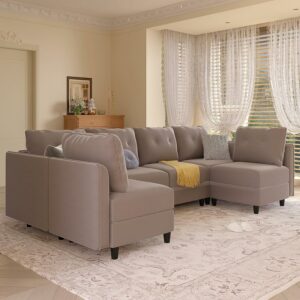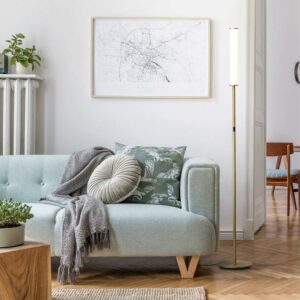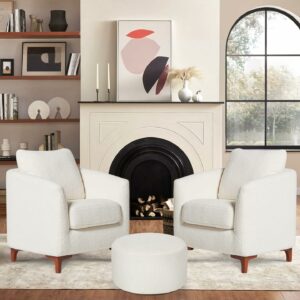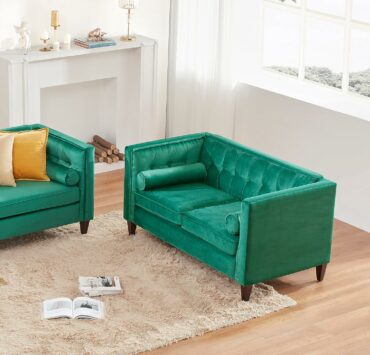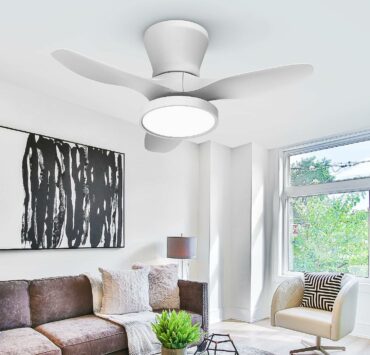A leather living room chair stands as an epitome of elegance, luxury, and unmatched comfort. When we think of a stylish yet cozy interior, this kind of chair often comes to mind. Serving both functional and aesthetic needs, a leather chair can transform any space into a sophisticated retreat.
What is a Leather Living Room Chair?
Commonly, a leather armchair found in the living room is called a club chair. These chairs, characterized by their spacious and deep seats, have adorned households for centuries. Notably, they owe their name to the gentlemen’s clubs of the 19th century in England where they were predominantly found.
Pros and Cons of Leather Living Room Chairs
Advantages:
- Durability: Leather chairs tend to last longer than fabric chairs.
- Easy Maintenance: They can be easily wiped down and don’t absorb spills as quickly.
- Timeless Elegance: Leather adds a touch of class and sophistication to any room.
Drawbacks:
- Cost: They can be more expensive than their fabric counterparts.
- Sensitive to Temperature: Leather can feel cold in winter and sticky in summer.
- Requires Care: Over time, leather might crack or fade if not treated properly.
Varieties of Leather Chairs
In the midst of understanding leather chairs, many often ask, “What are those leather chairs called?” While the club chair is a popular choice, several other distinctive types stand out:
- Chesterfield: Recognized by its deep button tufting and high armrests.
- Wingback Chair: Features “wings” on the back, which can provide additional head and neck support.
- Modern Lounge Chair: Typically sleeker in design, focusing on comfort and contemporary aesthetics.
Understanding Types of Leather for Chairs & Their Costs
Full-Grain Leather:
- Description: It’s the highest quality leather, using the top layer of the hide.
- Pros: Natural look, most durable, ages beautifully forming a patina.
- Cons: Can be expensive and may show natural imperfections.
- Approximate Cost: $$$$ (Most expensive)
Top-Grain Leather:
- Description: A step below full-grain, it’s the second highest quality. The top surface is sanded to remove imperfections.
- Pros: Smoother and more consistent in appearance, more resistant to stains.
- Cons: Doesn’t age as gracefully as full-grain leather.
- Approximate Cost: $$$
Split Leather (or Suede):
- Description: Derived from the lower layer of the hide and often used for suede products.
- Pros: Softer texture and more affordable.
- Cons: Less durable, prone to stains and wear.
- Approximate Cost: $$
Bonded Leather:
- Description: Made from leftover scraps of leather, bonded together with adhesives.
- Pros: Most affordable leather option.
- Cons: Least durable, may peel over time.
- Approximate Cost: $
Faux Leather (or Leatherette):
- Description: A synthetic material designed to mimic the look and feel of real leather.
- Pros: Vegan-friendly, resistant to sun fading, generally cheaper.
- Cons: Not as breathable, may not age as well, lacks the genuine leather feel.
- Approximate Cost: $
Caring for Your Leather Living Room Chair
Maintaining the pristine condition of your leather chair is not as challenging as it might seem:
- Regular Dusting: A simple wipe-down with a dry cloth can prevent dust accumulation.
- Use Specialized Cleaners: Avoid using water; opt for leather cleaners.
- Keep Away from Direct Sunlight: This prevents the leather from drying and fading.
Conclusion
The allure of a leather living room chair lies not just in its looks but also in its ability to merge durability with design. While it has its set of challenges, the benefits often outweigh the downsides, making it a preferred choice for many.
FAQ about Leather Living Room Chair
What is a leather armchair called?
A leather armchair, especially one commonly found in living rooms, is called a club chair.
How do I maintain my leather living room chair?
Regularly dust it, use specialized leather cleaners, and avoid exposing it to direct sunlight to ensure its longevity.
Are leather chairs pet-friendly?
While leather chairs are easier to clean than fabric, they can be prone to scratches. If you have pets, consider getting a protective cover.
